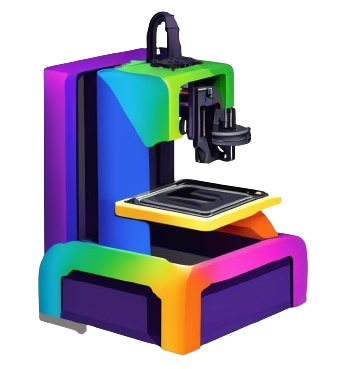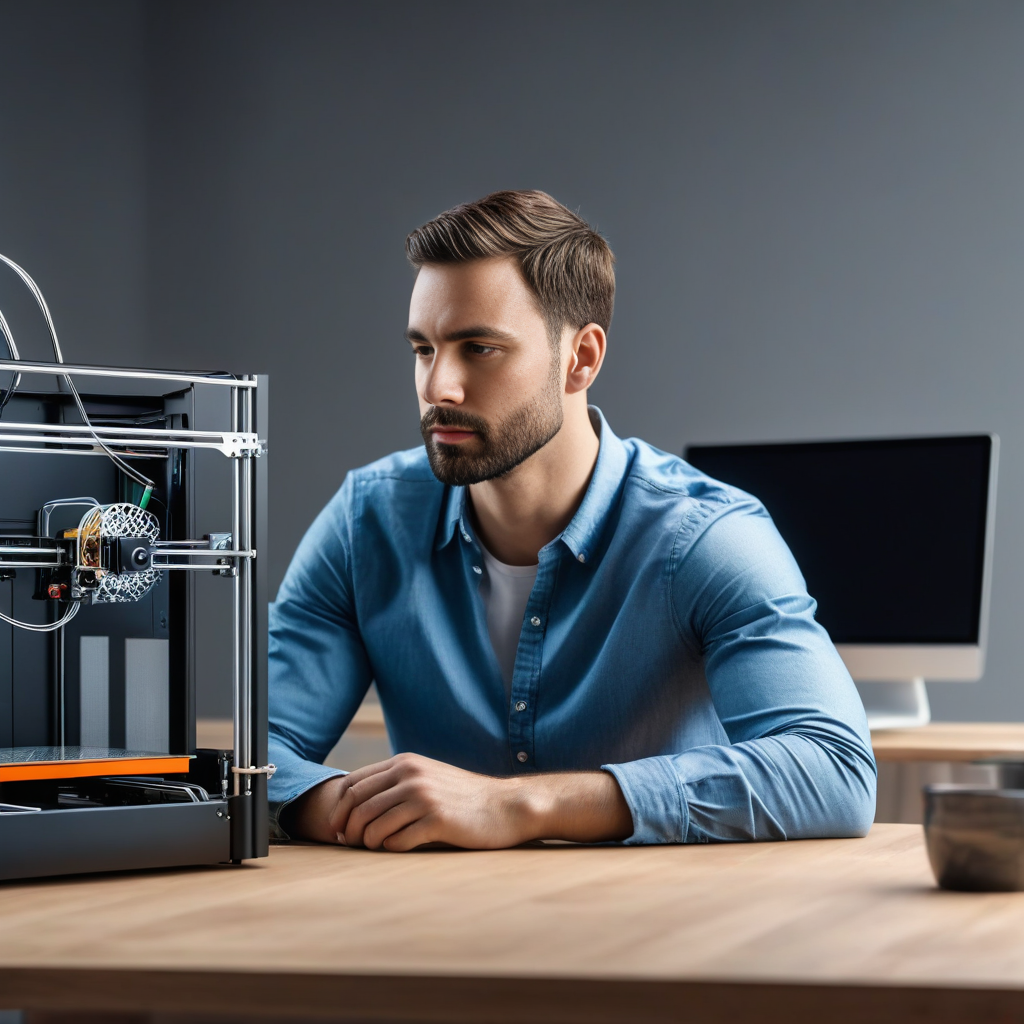Complexity surrounds the world of 3D printing, often deterring potential enthusiasts with its technical jargon, intricate methodologies, and diverse materials. However, exploring into this transformative technology can lead to a fulfilling and exhilarating journey with the right guidance. This detailed guide aims to demystify the common hurdles beginners face, simplifying the complexities of 3D printing and empowering readers to begin on their own exploration with confidence.
Addressing the Key Question: Is 3D Printing Hard?
The Perceived Difficulty of 3D Printing
Any technology, like 3D printing, comes with its unique challenges that contribute to the perceived difficulty, especially for beginners. It involves understanding technical terminologies, mastering design software, and selecting the right materials and printing technology. These elements can make the process seem complex initially but can be overcome with practice and guidance.
Importance of This Guide: Simplifying 3D Printing
On the other hand, this guide aims to simplify the complexities surrounding 3D printing, making it more approachable for those looking to explore this cutting-edge technology. By breaking down technical aspects, providing explanations of the printing process, and offering troubleshooting tips, this guide empowers readers with the knowledge and confidence to explore into the world of 3D printing with ease.
Understanding the Perceived Difficulty in 3D Printing
Factors Contributing to the Complexity of 3D Printing
Some factors contributing to the perceived difficulty of 3D printing include the diverse range of printing methodologies like FDM, SLA, and SLS. Each method has its unique attributes, hardware requirements, and techniques. Understanding these methods is crucial for navigating the world of 3D printing successfully. Knowing the differences between them can help beginners choose the right approach for their projects.
Designing 3D Models and Material Selection
Models designed for 3D printing must consider various aspects like overhangs, supports, and material properties to ensure successful outcomes. Plus, the choice of material plays a key role in the complexity of 3D printing. Different materials have unique properties and require specific handling and post-processing techniques. Understanding how to work with these materials is crucial for creating high-quality 3D prints.
Decoding the Technical Jargon in 3D Printing
Fused Deposition Modeling (FDM)
To understand Fused Deposition Modeling (FDM), it involves the continuous extrusion of a thermoplastic filament through a heated nozzle, layer by layer, to create the object. FDM is popular for its accessibility and versatility in using various materials like PLA, ABS, and PETG.
Stereolithography (SLA)
Deposition using light to cure liquid resin into solid form is what defines Stereolithography (SLA) in 3D printing. SLA printers are known for their high precision and ability to create intricate designs with a smooth finish, often used in industries requiring detailed parts like dentistry and jewelry making.
It uses a laser or other light source to selectively harden parts of a resin bath, building the object layer by layer. The handling of resins and post-processing like curing and washing are crucial steps that require a thorough understanding of materials’ properties.
Selective Laser Sintering (SLS)
Selective Laser Sintering (SLS) is another 3D printing method that utilizes a laser to sinter powdered material, whether plastic, metal, or ceramic, binding it together to create a solid structure. SLS printers are favored for their ability to produce complex and robust parts without the need for support structures, popular in industries where strength and precision are critical.
The layering of powdered material, precise laser control, and post-processing steps contribute to the intricate nature of SLS technology. Understanding the distinct materials, laser functions, and temperature regulation is vital for mastering this method.
Other 3D Printing Methods
When exploring other 3D printing methods like PolyJet, DLP, and Binder Jetting, users encounter diverse applications, advantages, and complexities. For instance, PolyJet printers can print in multiple colors and materials simultaneously, while Binder Jetting involves binding powder particles with liquid, allowing for full-color prints. Understanding each method’s unique properties aids in selecting the most suitable one for specific projects.
Printing in multiple colors and materials simultaneously, PolyJet technology offers a versatile approach to 3D printing, catering to a wide range of design needs. DLP printers use digital light projection for rapid resin curing, enabling efficient production of detailed parts. Binder Jetting, on the other hand, binds powder particles together using a liquid binding agent, allowing for full-color prints with intricate details. The structure of the technical jargon in 3D printing, including various methods like FDM, SLA, and SLS, can be overwhelming for newcomers. Understanding the differences, advantages, and limitations of each method is crucial in selecting the appropriate one for different projects. The diverse range of printers, with their unique characteristics, complexity, and applications, adds to the richness of the 3D printing landscape.
Demystifying the Different Types of 3D Printers
Despite the vast array of 3D printers on the market, understanding the differences between them is crucial for selecting the right one for your needs. Each type has its unique advantages and complexities that beginners should be aware of.
| FDM Printers | SLA Printers |
|---|---|
| For beginners, FDM printers are often a great starting point due to their accessibility and versatility in materials. | Any enthusiast looking for high precision and intricate designs may find SLA printers to be the ideal choice. |
FDM Printers
For beginners, FDM printers are often a great starting point due to their accessibility and versatility in materials.
SLA Printers
Any enthusiast looking for high precision and intricate designs may find SLA printers to be the ideal choice. Plus, understanding the photopolymerization process is crucial to mastering this technology.
SLS Printers
Printers using the SLS method can produce robust parts with complex geometries, making them popular in industries where strength and precision are crucial. For instance, understanding the post-processing steps, such as removing excess powder, is crucial for achieving quality prints.
Other Types of 3D Printers
Printers like PolyJet and DLP offer unique applications and advantages, such as full-color printing and rapid curing of resin. Knowing the specific features and limitations of each type can help in making an informed decision.
| PolyJet Printers | DLP Printers |
|---|---|
| Printers that can print in multiple colors and materials simultaneously, offering a wide range of creative possibilities. | Printers that utilize digital light projection for quick resin curing, ideal for rapid prototyping and detailed designs. |
The landscape of 3D printing is diverse, with each type of printer catering to different needs and requirements. Knowing the strengths and weaknesses of each can help users navigate the vast array of options available and choose the right printer for their projects.
Hurdles in the Initial Setup and Calibration of 3D Printers
Assembling and Calibrating the 3D Printer
Hurdles can arise when assembling and calibrating a 3D printer, especially for beginners opting for a DIY kit. The meticulous nature of aligning parts, ensuring proper wiring, and fine-tuning settings like bed level and extrusion rate can be intimidating. However, with guidance from user support resources and a patient approach, overcoming these hurdles is feasible for a smoother printing experience.
Importance of Bed Leveling
Calibration plays a crucial role in 3D printing, particularly in ensuring the first layer adheres correctly to the print bed. Proper bed leveling is important for preventing issues like warping or shifting during printing. Whether manually adjusting using feeler gauges or utilizing automated sensors, maintaining a level bed is fundamental for consistent print quality and successful outcomes.
Bed leveling, while seemingly technical, is a fundamental aspect of 3D printing maintenance that directly impacts the final quality of prints. Ensuring the first layer adheres evenly is crucial for preventing issues such as warping, shifting, or detachment during printing. Mastery of bed leveling techniques, whether through manual adjustment or automated processes, can significantly enhance print quality and increase overall success rates in 3D printing projects.
The Challenges in Creating and Modifying 3D Models
Once again, the process of creating and modifying 3D models presents a significant challenge for beginners in 3D printing. This intricate task demands a deep understanding of design concepts, mathematical principles, and the impact of the physical printing process on virtual designs.
Understanding 3D Modeling Software
For beginners delving into the world of 3D printing, understanding and navigating 3D modeling software is a fundamental step. From powerful tools like Blender and Fusion 360 to more user-friendly options like Tinkercad, these software programs provide the platform for creating and modifying virtual models that can be brought to life through 3D printing.
Design Considerations for 3D Printing
To ensure successful 3D prints, designers must consider various factors such as overhangs, supports, wall thickness, infill density, and material properties. These design considerations play a crucial role in the printability, strength, and overall appearance of the final printed object.
For instance, the choice of printing technology and material influences the design process. FDM printers may require support structures for overhangs, while SLA printers allow for more intricate designs. Material properties like flexibility and shrinkage also impact design decisions, ensuring that the final object meets functional and aesthetic requirements.
Navigating 3D Modeling Software
Designing in 3D modeling software requires an understanding of spatial relationships, geometric principles, and the specific capabilities and limitations of each software tool. Whether using complex programs like Blender or beginner-friendly options like Tinkercad, mastering these tools is necessary for creating printable models that translate effectively from the virtual to the physical world.
This foundational knowledge allows designers to unleash their creativity and explore a multitude of design possibilities for 3D printing projects, whether for personal hobbies, educational endeavors, or professional applications.
The Art of Designing Printable Models
Designing for 3D Printing Constraints
For any aspiring 3D printing enthusiast, mastering the art of designing printable models involves understanding and navigating the constraints of the technology. Factors such as overhangs, supports, wall thickness, and infill density play crucial roles in the success of a print. By considering these limitations during the design process, creators can ensure that their models are not only visually appealing but also structurally sound when brought to life through 3D printing.
Material Properties and Post-Processing
Designing 3D models goes beyond just creating visually appealing objects. Material properties and post-processing steps are integral aspects that must be considered during the design phase. Understanding the characteristics of different materials, such as flexibility, strength, and shrinkage, is necessary for ensuring the functionality and durability of the final printed object. Additionally, anticipating post-processing requirements, such as sanding, painting, or assembly, can significantly impact the overall quality and finish of the printed model.
Post-processing plays a crucial role in the final appearance and functionality of a 3D printed object. Factors such as sanding, painting, or assembly can greatly enhance the finished product. By designing models with post-processing in mind, creators can streamline the finishing process and achieve professional-looking results. Understanding how material properties impact post-processing requirements is key to creating successful 3D prints that meet both aesthetic and functional needs.
Final Words
Following this detailed exploration of the complexities and challenges surrounding 3D printing, one thing becomes abundantly clear: while 3D printing may present initial hurdles and require a significant learning curve, it is ultimately a rewarding and fulfilling journey for those who are willing to invest the time and effort. With the right guidance, persistence, and a passion for creativity, anyone can navigate the intricacies of 3D printing and unlock the limitless possibilities it offers. So, is 3D printing hard? Yes, but with dedication and a thirst for knowledge, it can become an engaging and enriching endeavor for individuals of all backgrounds and skill levels.

